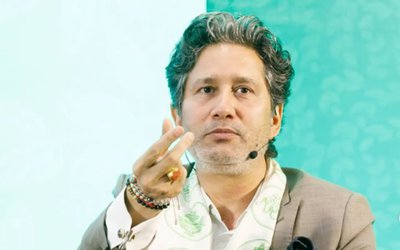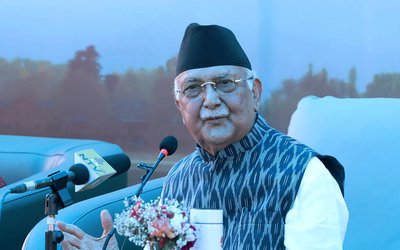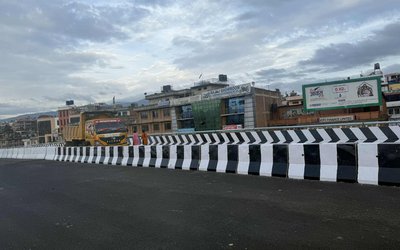More on News






Kusum Kala Silwal, 38, a resident from across the Tila River in ward no 3 of Gela VDC of remote Kalikot, has a reason to rejoice as the construction of a Tow-In has eased and even saved her life.
“I am so lucky to be alive. All thanks to the tuin, I crossed the river in just three minutes and reached the health post in time,” said Silwal.
Thanks to Gravity Ropeway, Raj Kumar Gurung, 40, Baralung of Chimkeshwori of Tanahu district, changed his mind about returning to Dubai for work. While he was home enjoying his holiday, Rajkumar learned about the training sessions on vegetables production organised by the Access Project.
“The reason I managed to make good profit is due to the ropeway installed in our village which transports our production to the highway leading to Mugling Market of Chitwan district,” said Gurung. Because of ropeway, farmers in Chimkeshwori are saving 50 to 70 percent of their transportation cost compared to the past and their products are transported to the highway within 2 to 3 minutes.
In 2007, Practical Action launched the Access for Opportunities, Nepal, Project with the objective to improve the socio-economic situation of 8000 marginalised households in Achham, Kalikot, Tanahu and Gorkha districts of Nepal.
During its five-year implementation period, the project designed and delivered 15 gravity goods ropeways and 18 improved tuins to enhance peoples’ mobility and access to other essential services. Along with installing the ropeway, the project also helped to develop the capacity of local communities who were then mobilized to install improved tuins and ropeways.
Practical Action’s experiences demonstrate that the complementary transport such as the ropeways and tuins are the most appropriate technologies for Nepal to satisfy the rural people’s immediate access needs.
The project also organized various capacity building activities like exposure visits, training on post harvest value addition and on and off seasonal vegetable production and micro irrigation facilities such as the health posts, schools, agriculture centers and market centers.
It is co-funded by the European Union (750,000 Euro – 59.56 percent of total project budget), Jose Entrecanales Ibarra Foundation Spain, Rotary Club of St. Helen, the UK Trust and Foundation, and George and Margaret Taylor and implemented by the local partners, Center for Community Development Gurkha, NGO Network in Tanahu,, Social Empowerment and building Accessibility Center in Achham and Karnali Integrated Rural Development and Research Center in Kalikot.
“Delegation of the European Union in Nepal is happy to be a part of the project. Successful implementation of the project helped to uplift the livelihood of the rural people of Nepal,” Lius Navarro, Head of Cooperation, Delegation of the European Union to Nepal, said.
Under the aegis of Practical Action, a final sharing workshop of Access for Opportunities Project has recently concluded. Addressing the program, chief guest Shital Babu Regmi, secretary at Ministry of Local Development, hailed the project as the most appropriate for a country like Nepal. “We need to expand these ropeways throughout the country. After listening about the program, I realised that Nepal needs to implement more such ropeways in various remote parts of the country,” said Regmi.
With investments of limited amounts of money, four districts have already shown how life can drastically transform through the use of ropeways.
“I am proud that after installation of the gravity goods ropeways and tuins, we are able to improve the transport service, enhance people’s mobility and access to essential services such as health, education and water. It also helps local people to increase the interactions with the external communities and markets and diversifying income generation activities through improved production, processing and marketing off farm products,” said Achyut Luitel, country director. The five projects designed and delivered 15 gravity goods ropeways and 18 improved tuins (cable river crossing).”
Practical Action’s experiences have shown that gravity ropeways can transform the livelihoods of the people living in rural parts of Nepal. This is a cost effective as well as affordable technology.







